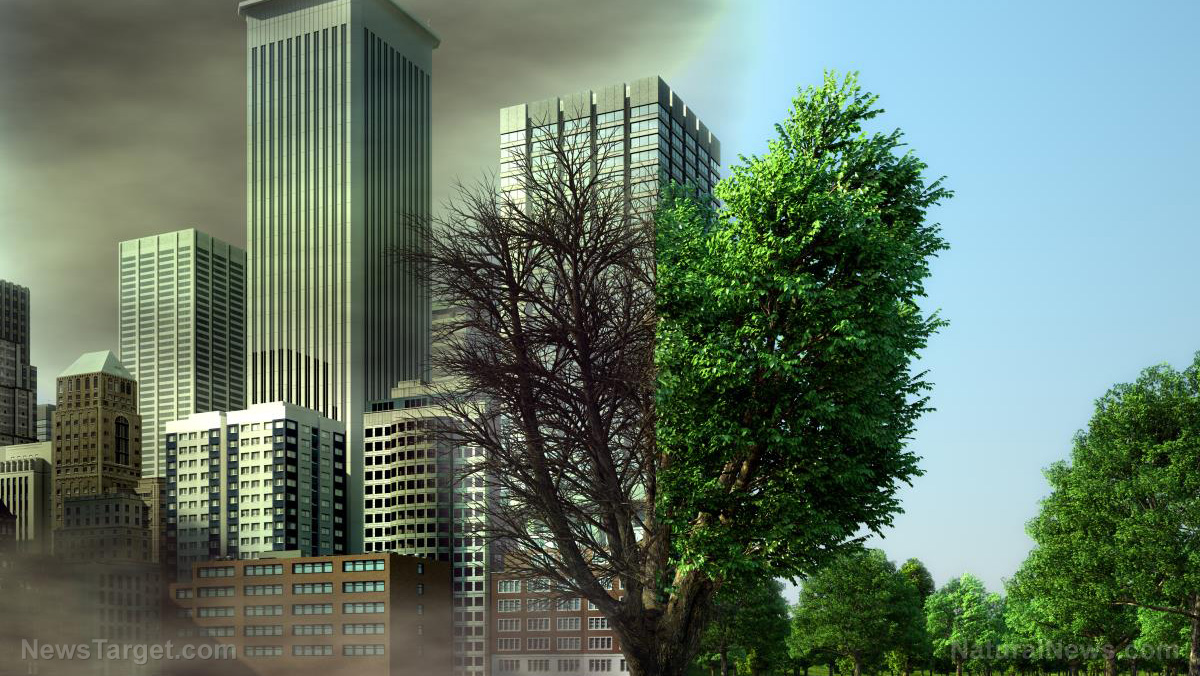Trees in the city can handle the heat and the bugs – if they have enough water
04/10/2018 / By Michelle Simmons

Having adequate amounts of water is not only applicable to humans, but also to trees. Trees in the urban area can survive the heat and the bugs if they have enough water. The study, published in the Journal of Applied Ecology, found that lack of water is a key stressor for city trees.
The researchers of the study from North Carolina State University aimed to identify what enabled some urban trees to deal with heat and pests such as scale insects better. They observed that some trees in the city looked stressed and struggling, while some looked vibrant even though they were covered in scale insects as well.
In the study, the researchers used both field data and controlled laboratory experiments. For the field data, they gathered detailed data on 40 urban willow oaks for two years. They included information on temperature, how water-stressed the trees were, and the density of scale insects. For the laboratory experiments, they used young willow oak trees. While growing the willow oaks, they controlled three variables – temperature, water, and the presence of scale insects.
The findings revealed that higher temperatures had positive effect on tree growth, but only if the trees had enough water. Moreover, the researchers found that when there was sufficient water, the scale insects had minimal or no adverse effect on the trees. Moreover, they found that lack of water alone could prevent the tree from growing – and even more so when the presence of scale insects and/or increased temperature were combined with water deficiency.
The study indicated that management techniques for increasing tree hydration in cities may minimize the negative effects of these key stressors. This will likely be increasingly essential because water availability, temperature, and pest abundance are influenced by “urbanization and climate change,” according to Emily Meineke, a postdoctoral researcher at Harvard and first author of a paper on the study.
“For example, urban planners could design urban landscapes that retain stormwater in vegetation; invest in hydration strategies, such as appropriate soil quality and soil volume; and plant drought-tolerant tree species and genotypes in the hottest parts of their cities,” suggested Steve Frank, an associate professor of entomology at North Carolina State University and co-author of the paper.
Benefits of urban trees
The increasing urbanization has negatively affected forests, landscapes, and green areas in and around cities. Its environmental impacts are often worsened by increasing pollution, decrease in availability of food and resources, increasing poverty, and frequency of extreme climatic events. Urban trees contribute to the reduction of the negative effects of urbanization. (Related: Doubling the number of trees in major cities would reduce air pollution and energy use, study finds.)
Here are some reasons why trees are important in the city:
- Increasing urban biodiversity – Trees play an important role in increasing urban biodiversity, which provides plants and animals with a favorable habitat, food, and protection.
- Reducing pollution – Trees absorb carbon dioxide, mitigating pollution. Trees are especially important in cities with high levels of pollution as they can improve air quality in the area.
- Cooling the air – When trees in the cities are strategically placed, they can help cool the air between two and eight degrees Celsius, which in turn reduce the heat around urban communities.
- Filtering the air – Trees, especially the large ones, serve as air filters. They absorb pollutants, such as carbon monoxide, nitrogen oxides, ozone, and sulfur oxides, as well as fine particulates, such as dust, dirt, and smoke. They filter the air by trapping pollutants and fine particulates on their leaves and bark.
- Improving physical and mental health – Studies showed that living near urban green spaces and having access to them can enhance both physical and mental health by reducing blood pressure and stress. In turn, this contributes to the well-being of urban communities.
Read more news stories and studies on trees and urbanization by going to Enviro.news.
Sources include:
Tagged Under: city life, city trees, drought resistance, Ecology, heat, high temperatures, hydration, lack of water, research, tree hydration, trees, urban areas, urban biodiversity, urban trees, urbanization, water, water deficiency
RECENT NEWS & ARTICLES
COPYRIGHT © 2017 ENVIRON NEWS




















